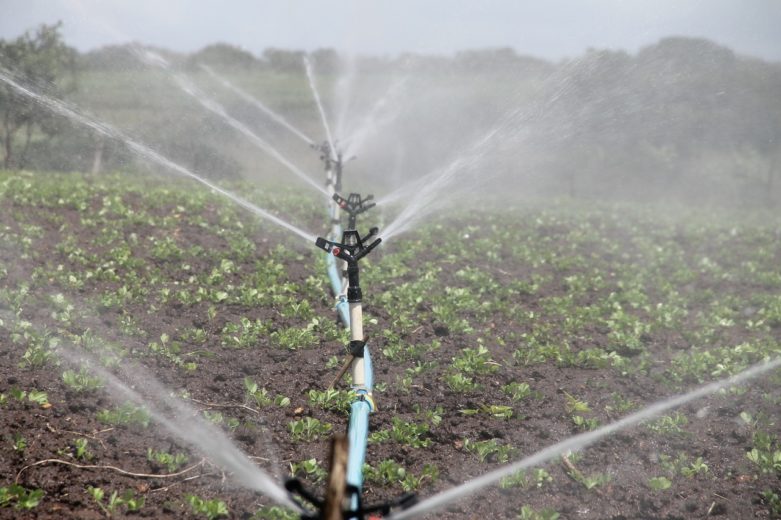
Maintaining an efficient irrigation system is pivotal for smart agriculture while ensuring the conservation of precious water resources. With the challenges of climate change, water resources have been severely impacted globally. Inclement weather has raised the water requirements for crop cultivation. Besides climate change, the steadily rising global population has also trained the food systems globally. Therefore, irrigation methods are at the forefront of all discussions on sustainable agricultural practices. This blog aims to explore innovative options for sustainable irrigation that harness cutting-edge technologies to maximize water efficiency and crop yield.
Innovative Irrigation Systems
Smart Irrigation: The Power of Data
Integrating Internet of Things (IoT) devices and sensors has ushered in an era of intelligent irrigation. These devices accumulate real-time data on soil moisture, weather conditions, and crop health, allowing farmers to decide when and how much to irrigate. This data-driven approach conserves water and prevents over-irrigation, which can lead to soil degradation and waterlogging. The Indian government’s efforts extend to leveraging remote sensing and satellite technology for effective water management. Initiatives like the Crop Insurance Scheme (PMFBY) use satellite imagery to assess crop health and moisture levels. This data aids in identifying regions that require immediate irrigation attention. These technologies optimize water utilization and improve overall agricultural productivity by ensuring that water is allocated where it is needed the most.
Drip Irrigation: Precision Water Delivery
Drip irrigation stands as a beacon of water efficiency in agriculture. This technique delivers water directly to the plant’s root zone, reducing water wastage through evaporation or runoff. Drip systems can be tailored to match the specific water requirements of different crops, ensuring optimal growth. Additionally, it minimizes weed growth due to localized watering, reducing resource competition.
Subsurface Drip Irrigation: Below the Surface
Subsurface drip irrigation (SDI) takes the concept of drip irrigation a step further. In SDI, water is delivered directly to the plant’s root zone through buried pipes or tubes. This technique minimizes water evaporation and reduces weed growth more effectively, resulting in optimal water utilization. Moreover, it prevents water contact with leaves, which can help reduce foliar diseases.
Micro-Irrigation Systems: A Paradigm Shift
The Indian government has been promoting adopting micro-irrigation systems, such as drip and sprinkler irrigation, as a viable alternative to traditional flood irrigation. These systems allow water to embed directly into the roots of plants, minimizing wastage due to evaporation and runoff. The Pradhan Mantri Krishi Sinchayee Yojana (PMKSY) focuses on expanding micro-irrigation techniques, aiming to cover more than one crore hectare of land. By improving water use efficiency, these techniques boost crop yield and significantly conserve water resources.
Greener Irrigation
Rainwater Harvesting: Nature’s Bounty
Rainwater harvesting presents a sustainable solution to supplement traditional irrigation methods. Farmers can store this natural resource for later use in irrigation by collecting rainwater from rooftops and other surfaces. This reduces the dependency on groundwater and lessens the strain on existing water sources. It’s a cost-effective way to ensure a steady water supply during dry spells.
Solar-Powered Pumps: Green Energy for Irrigation
Traditional diesel or electric pumps can be replaced with solar-powered alternatives, reducing carbon emissions and operational costs. These pumps harness energy from the sun to power water delivery systems. Integrating solar panels into irrigation systems also contributes to reducing the overall carbon footprint of agricultural activities. In the Indian context, erratic rural electricity supply often mars agricultural activities. The Indian government has introduced solar-powered pumps through schemes like the Kisan Urja Suraksha Evam Utthaan Mahaabhiyan (KUSUM) to provide a reliable energy source for irrigation and contribute to reducing carbon emissions. Farmers are being incentivized to switch to solar-powered pumps, ensuring sustainable irrigation practices and enhancing economic prospects.
Watershed Development: A Holistic Approach
Recognizing that adequate irrigation encompasses more than just water delivery, the government has been investing in watershed development projects. Initiatives such as the Integrated Watershed Management Programme (IWMP) focus on soil and water conservation, afforestation, and rainwater harvesting. By treating watersheds as interconnected systems, these projects address the major issues of water scarcity and degradation, benefiting farmers and rural communities.
Jal Shakti Abhiyan: Reviving Water Bodies
The Jal Shakti Abhiyan is a flagship water conservation and management campaign. One of its key components is the revival of traditional water bodies, such as ponds and lakes, through desilting and rejuvenation. These efforts will enhance groundwater recharge and provide additional water sources for irrigation. This initiative holds immense promise in strengthening irrigation infrastructure by combining traditional wisdom with modern techniques.
India’s rural backbone heavily relies on irrigation to ensure consistent agricultural productivity. With a significant population engaged in farming, and given the unpredictable nature of monsoons, adequate irrigation becomes imperative. In the grand scheme of sustainable irrigation, these innovations are reshaping the agricultural landscape by helping farmers meet the ever-increasing demand for food production while preserving water resources and mitigating environmental impacts.
The journey toward sustainable irrigation remains an ongoing endeavour. As we strive to meet the needs of a growing global population, these irrigation methods offer a glimpse into a productive and ecologically responsible future. The adoption of these methods relies on awareness generation amongst farmers and multiple agencies and government bodies are reaching out to empower the Indian farming community and have been ardently working on implementing innovative techniques to strengthen irrigation practices across the country.
Conclusion
In a country where agriculture is the foundation of the economy, the Indian government’s innovative techniques to strengthen irrigation are instrumental in ensuring food security and rural development. The government is creating a holistic and sustainable framework for irrigation management by deploying micro-irrigation systems, solar-powered pumps, remote sensing, watershed development, and initiatives like the Jal Shakti Abhiyan.
These initiatives address the challenges posed by unpredictable rainfall patterns and contribute to conserving water resources and mitigating climate change impacts. By blending technology, traditional wisdom, and meticulous planning, the Indian government is paving the way for a more resilient and prosperous agricultural sector.

